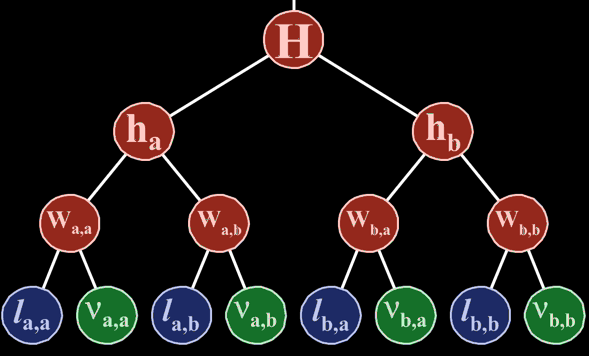Choose a decay tree
Create a fully configurable decay tree to analyze HEP events, designed for the processes you want to study. Include all the decay tree details or use a useful abstraction with only the features you are interested in.
Derive a basis
Each decay tree implicitly defines a complete basis of kinematic observables. Use masses, momenta, and decay angles, evaluated in any reference frame, to extract the most information from events.
Jigsaws under the hood
Whether your events contain combinatoric ambiguites due to identical final state particles or missing information resulting from one or more invisible particles, Recursive Jigsaw Reconstruction has you covered.
Analyze anything
Decay trees can be of arbitrary complexity with as many reconstructed or invisible particles as you like. The only limitation is the number of particles you reconstruct in your event and your imagination in choosing Jigsaws.
RestFrames news

RestFrames @ SUSY16
RestFrames / Recursive Jigsaw-related results appearing in the SUSY16 conference in Melbourne

Big updates to examples
To coincide with the first RestFrames release there's been a big examples update

Fun with gource
See the evolution of RestFrames development with gource

RestFrames is here!
The first stable release of **RestFrames** is now available
Recently added examples

H to hh to 4 W(l nu)
Heavy Higgs decaying to two light Higgs, in-turn decaying to leptonic W's, looking at complex invisible jigsaws.

N W(l nu)
Varying N for W(l nu) production, looking at minimizing the sum masses squared with invisible jigsaws

Di-Neutralinos decaying to Z(ll) H(gg) + LSPs
D-Neutralinos decaying to Z and Higgs, with two LSPs in the final state, also considering high compression

Di-stop to 2b, 2l, 2sneutrino through charginos
Di-stop to b chargino, with charginos decaying to lepton sneutrino, with varying and mixed chargino masses
